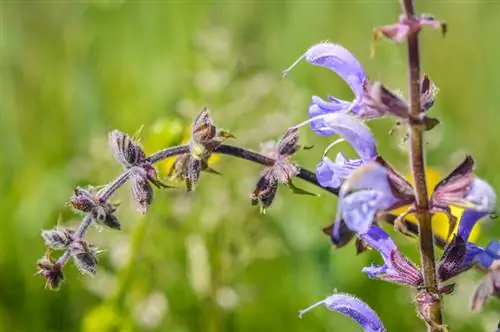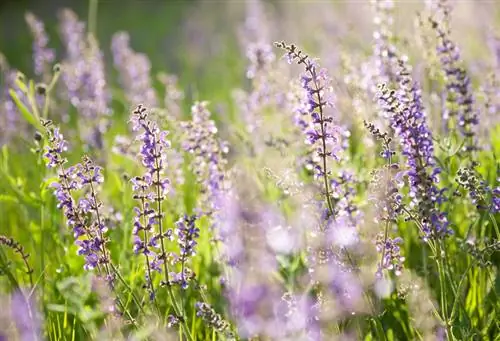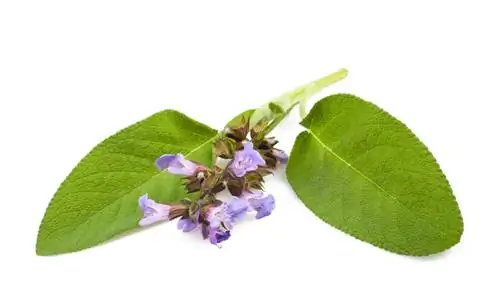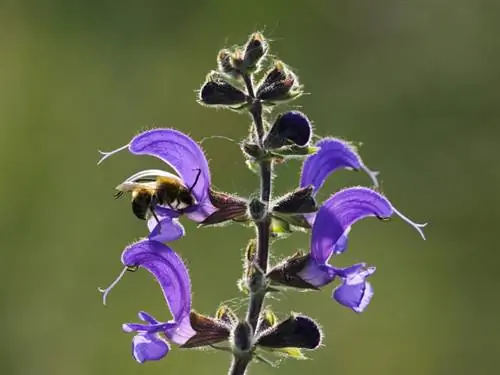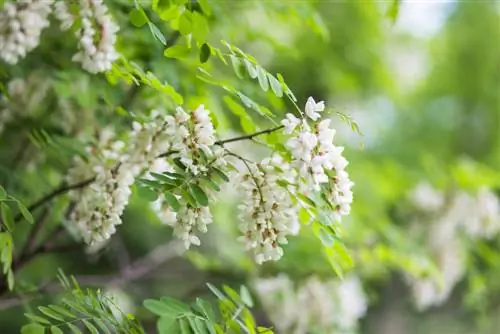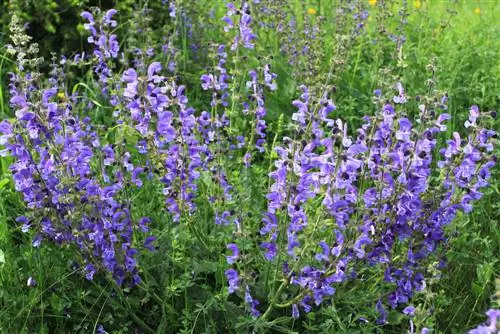- Author admin [email protected].
- Public 2023-12-16 16:46.
- Last modified 2025-06-01 06:02.
Meadow sage is one of the wild plants that is very widespread. The pretty blue-violet, occasionally pink and white flowers appear on long stems and delight nature lovers and gardeners for many weeks. A profile.
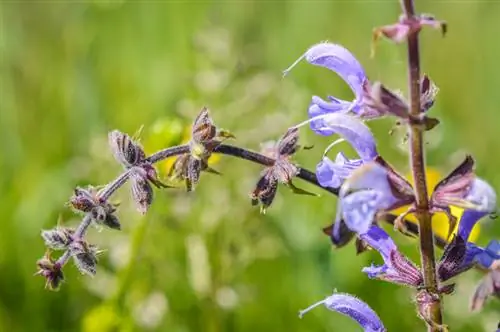
What is meadow sage?
The meadow sage (Salvia pratensis) is a perennial wild plant from the mint family that grows up to 70 cm high and prefers sunny locations and calcareous soils. Its blue-purple, pink or white flowers bloom from May to August and attract bumblebees and butterflies. Meadow sage is also used as a medicinal plant, for example for digestive problems.
The meadow sage - a profile
- Botanical name: Salvia pratensis
- Family: Mint family
- Special features: half rosette plant
- Origin: Mediterranean region
- Distribution: Europe, Caucasus, North America. Grows up to 1,600 meters in height
- Location: Sunny locations - meadows, roadsides, fallow land
- Species: around ten species for natural gardens
- Height: up to 70 centimeters high
- Perennial: lives for several years
- Location: wild plants, sunny meadows, fallow land
- Leaves: green, up to 10 cm long and 5 cm wide
- Flower colors: predominantly blue-violet, occasionally pink and white
- Flowering time: May to August, 2nd flowering possible in autumn
- Pollination: lever mechanism, main pollinator bumblebees
- Propagation: seeds, root division, cuttings
- Toxicity: not poisonous
- Use: ornamental plant in the garden, medicinal plant
Meadow sage needs a lot of light
One of the special features of meadow sage is that it is a light plant. If the plant receives less than 20 percent of normal light, it becomes sterile and no longer reproduces.
Meadow sage is very popular with bumblebees and butterflies. The wild plant is therefore also grown in the garden as a so-called bee pasture.
Cultivating meadow sage in the garden
To cultivate meadow sage in the garden, you need a location that is as sunny as possible. The planting substrate should be well-drained. Calcareous soils are preferred, but meadow sage also grows well in other locations as long as it gets enough sun.
The wild plant develops long taproots and should therefore not be transplanted.
Particularly beautiful types of meadow sage for the garden are:
- Midsummer
- Ocean Blue
- Lapis Lazuli
- Rose Rhapsody
Use as a medicinal plant
Meadow sage, like other members of the sage family, is not poisonous. The leaves contain fewer active ingredients than common sage. Among other things, it contains: tannic acid, bitter substances, flavonoids and essential oils.
Meadow sage is used for digestive problems, heavy sweating and skin diseases. The plant is used as a tea, which is used both internally and externally.
Tip
Meadow sage is extremely easy to care for if you grow it in the garden. After flowering, cut it back completely. It then sprouts again in early autumn.

